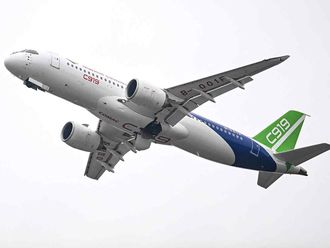Kabul, Afghanistan: In affluent areas of the Afghan capital, sky-blue vans make daily deliveries of huge plastic water-cooler jars, dropping them at embassies, offices and ornate private homes surrounded by high walls.
“Water, clean and pure,” beckon the slogans on each van. “Water is life.”
But in much of greater Kabul, where the population has tripled to 5 million in the past decade, the quest for safe drinking water is more arduous. Returned war refugees camp in muddy vacant lots; trenches of fetid waste water run beside dusty, unpaved streets. Apartment construction has soared, adding to the strain on old, overloaded water and sewer services.
With no formal water supply systems in many areas, people dig wells in their yards, boring deeper each time they dry up. With no public sewage systems, some also build septic tanks, but many simply dig latrines. As a result, well water sometimes mixes with sewage underground and becomes contaminated. Chemicals from construction or factories can also leach into the ground, giving the water a bitter taste.
“We dug very deep to get fresh water. It tastes OK and the kids are used to it, but if we don’t boil it, my mother says it makes her feel sick,” said Asif, a computer engineer whose family lives in a neatly kept house off a dirt alley.
“The city is getting very crowded and there is so much new building,” he said. “The system is very old and the government can’t keep up.”
High levels of e-coli
Several recent media reports have warned that Kabul’s water is becoming dangerously contaminated, but government health officials say that is an exaggeration. They estimate that 70 per cent of the urban water supply is safe. There have been scattered reports of more people being stricken with diarrhoea in hot weather this summer, especially children, but no major outbreaks of water-related diseases have been reported.
A survey of household water connections in Kabul by the National Environmental Protection Agency in March found high levels of e-coli bacteria in 5 of 22 sites tested. The report said that 77 per cent of the samples met World Health Organisation standards, but that due to a lack of chlorine and laboratory supplies, the scope of the survey was cut back by half.
“We used to get a lot of support for water-testing from Unicef and the WHO, but that has ended. We are doing the best we can, but now we have to wait for the government purchasing process, and we can’t get spare parts for lab work,” said Mahmad Ali, a public health official who oversees water testing and preventive health outreach. One order for a 50 gallon drum of chlorine, he said, took 18 months to be delivered.
Teams of specialists from Ali’s office regularly visit city schools and other public facilities, checking on health conditions and sampling water from wells and pumps. On a recent day, the team visited a large kindergarten programme in west Kabul. “For a child, diarrhoea can be deadly,” Popalzai, an inspector said.
One inspector, Mahmad Daoud, said fears of drinking-water contamination had given rise to sophisticated scams in which discarded commercial water bottles were being refilled from wells, resealed and sold as pure.
The irony of Kabul’s growing water problem is that the capital is surrounded by sources of pristine water, including the snow-capped Hindu Kush mountains in the distance and dams on powerful rivers in two nearby provinces. President Ashraf Gani has made dams a top priority; last summer, with support from India, construction began on a long-delayed major dam in western Afghanistan.
But delivering mountain and river water safely to hundreds of thousands of households in Kabul is an expensive and risky undertaking. They city has been damaged by decades of conflict and now faces frequent bombings by insurgents, who have also attacked rural reservoirs and dams. An ambitious, internationally-funded project to build pipes, reservoirs and wells across the capital, launched two years ago, is still in the early stages.
‘Best water in the world’
Sardar Wali Malikzal, director of the Afghan Urban Water Supply and Sewer Corporation, is at the nerve centre of this effort. Malikzal said that officials are starting to force builders of large projects to provide modern water and sanitation systems. But public piped water is still reaching less than a fifth of urban households.
“Afghanistan has the best and sweetest water in the world,” Malikzal said. “It is safe to drink, and we have a lot of it. But there are 5 million people in the city now, and we all have to take responsibility. Most diseases come from polluted water, so water needs to be filtered. Wells and septic systems have to be standardised. The challenge is not the water itself,” he added. It’s management, and it’s money.”
— Washington Post












